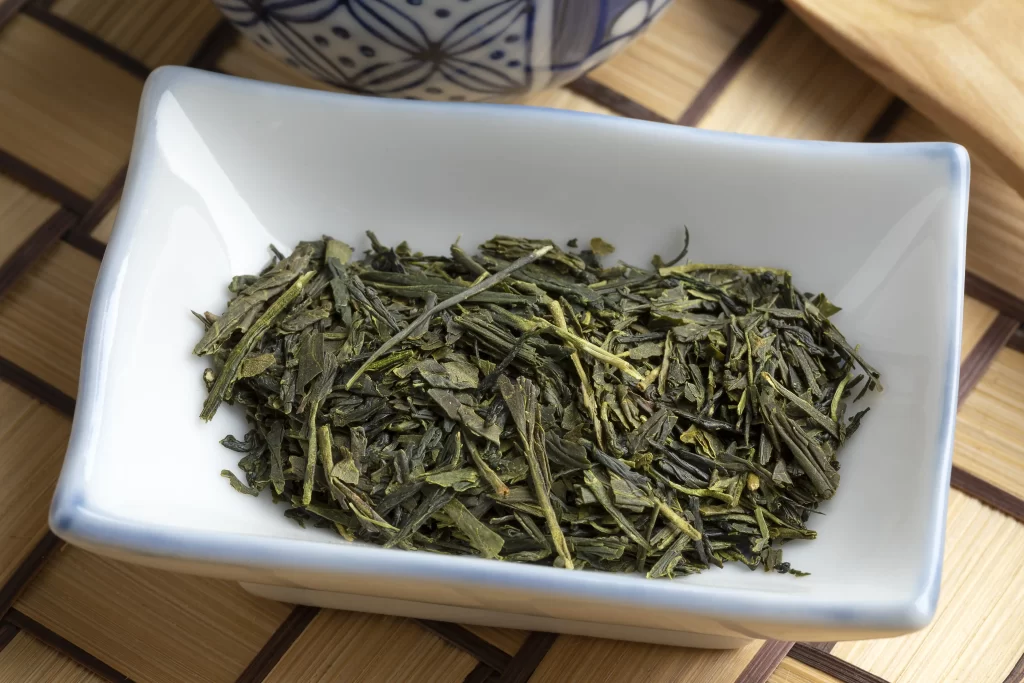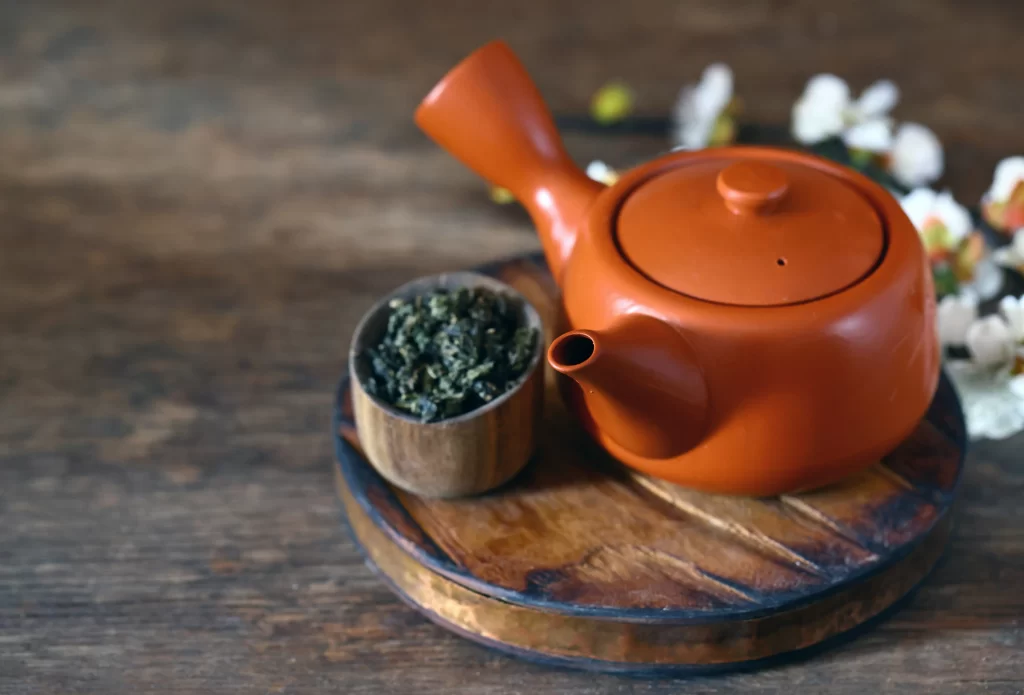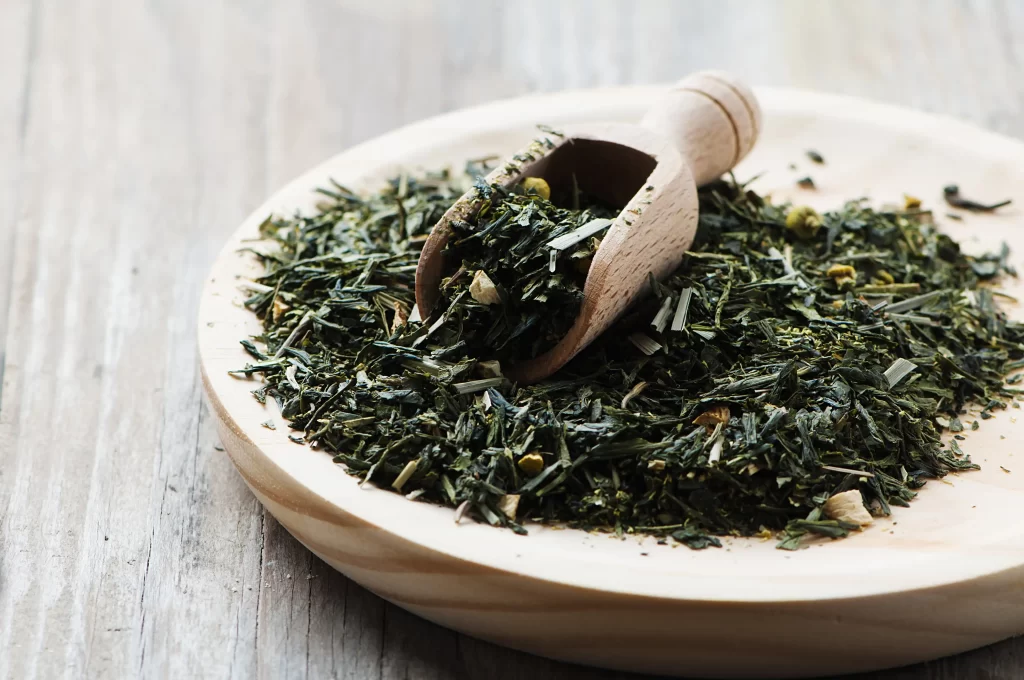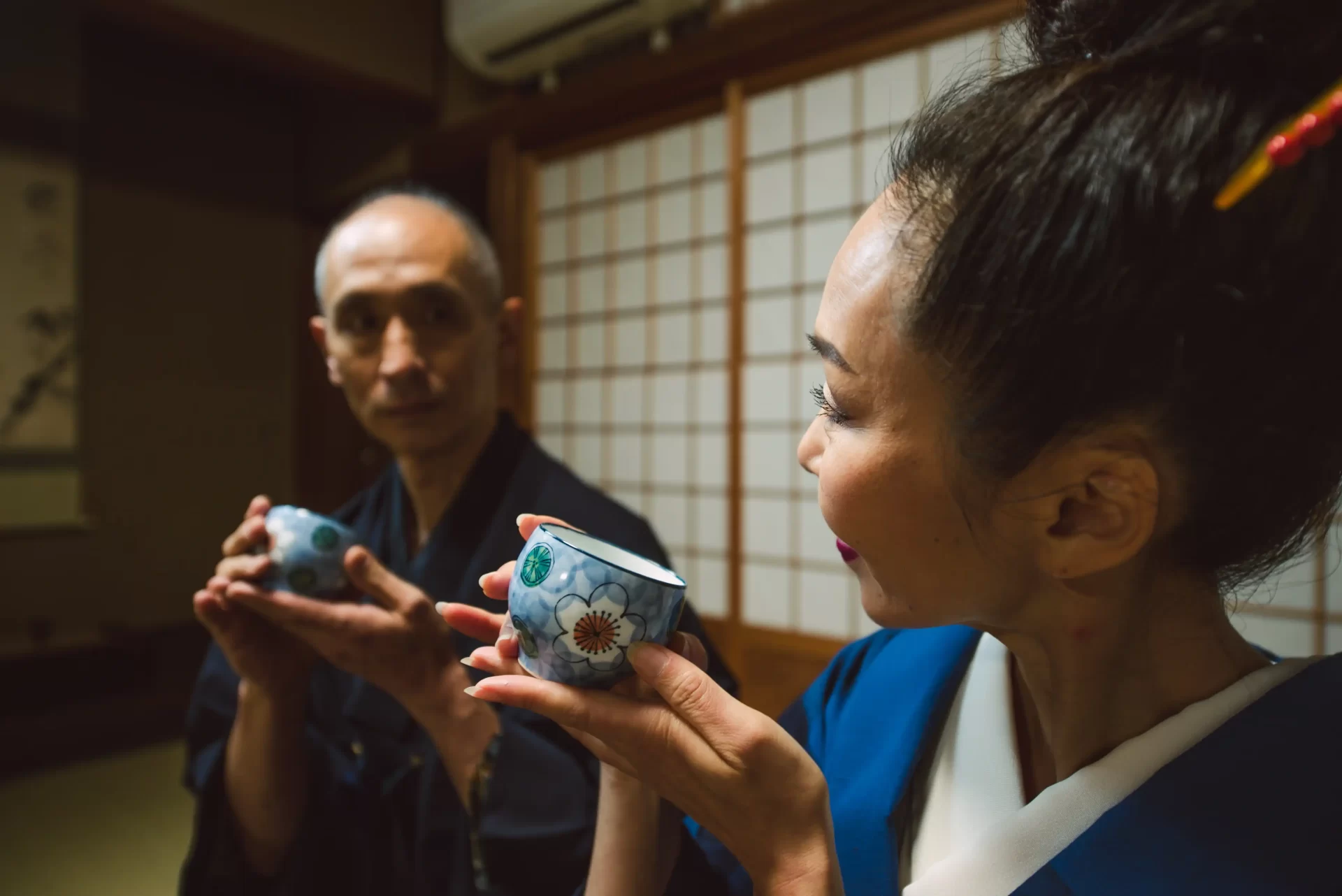Refreshing and full of flavor, sencha tea wakes up one’s senses and boosts health at the same time. Pungent and with just the right mixture of sweet, and slightly bitter, this Japanese green tea is really loved by many because of its great taste and health benefits. Interested in why this Traditional Japanese Tea is such a favorite among green teas? Read on for how it will make every day better with a daily dose.
What is Sencha Tea?
Sencha tea is one of the famous green teas, especially in Japan, where it has become very important in traditional tea culture. Contrasting with matcha, which needs to be powdered, Sencha utilizes whole tea leaves that are steeped in hot water, making it an easier preparation method and, hence, a favorite among Japanese tea drinkers. It was discovered in the 17th century and soon got popular due to its simplicity. Today, it makes up 80% of Japan’s tea consumption. Apart from its great taste, Sencha offers health benefits, such as antioxidants that support metabolism, heart health, and overall well-being-all of which are reasons why it is considered a must-have for tea enthusiasts.
Origin and History of Sencha Tea
Sencha was first brought from China to Japan in the 17th century. Before that, matcha was the most popular tea in Japan. However, Sencha quickly became popular because it was easier to prepare than matcha. Today, Sencha is the most common type of tea in Japan, making up 80% of all tea consumed.
Sometimes referred to as “ryokucha,” a name meaning green tea in Japanese, it is described by refreshing and lively flavor and aroma. The first harvest of the year, when new leaves and shoots begin to grow, is called “shincha,” or “new tea,” and these early-harvest Sencha teas are very different from those leaves picked later in the year, such as “nibancha” (second-pick tea) and “sanbancha” (third-pick tea).
Sencha is said to have been invented by Nagatani Sōen, who perfected the art of producing Sencha in Uji, Kyoto, in 1738. Although Sencha as a category itself is a relatively recent development in Japan’s tea history, it was during the 19th century that its popularity really took flight, especially when it became a great export to the United States. Today, Sencha has remained one of the important symbols of Japanese green tea and is still a favorite of green tea consumers all over the world for its peculiar flavor and rich cultural heritage.

Sencha Tea in the Cultural and Traditional Japanese World of Teas and Their Ceremonies
At the core of a very unique, Japanese tea ceremony, that combines simplicity with profound meaning, is Sencha. While formalized, similar to the matcha tea preparation ceremony, the Sencha ceremony does not have that formal aspect and more accessibility while retaining the beautiful part of Japanese tradition.
Philosophy Behind Sencha Tea Ceremony
Rooted in the principles of Wabi-Sabi, the ceremony embraces imperfection and the beauty of fleeting moments. It encourages mindfulness, respect, and stillness, enabling participants to appreciate the present moment and find peace in simplicity.
Key Principles: Harmony, Respect, Purity, and Silence
The Sencha tea ceremony is based on four key principles:
- Harmony (Wa) – Integrating with nature and others.
- Respect (Kei) – Showing respect for all persons concerned with the ceremony.
- Purity (Sei) – Keeping the spirit and environment clean.
- Silence (Jaku) – A principle to create stillness that helps in quiet contemplation.
These principles guide the ceremony to further encourage a peaceful, mindful existence.
Symbolism in Japanese Culture
The Sencha tea ceremony symbolizes the three basic values of Japan: harmony, simplicity, and respect. The connection between traditional customs and contemporary life can help one stay connected with Japan’s rich cultural history while being conscious of mindfulness in daily tasks.
Basic Utensils Used in the Ceremony
The tools used in the Sencha tea ceremony are chosen for their function and aesthetic appeal:
- Kyusu: A teapot with a side handle for brewing Sencha.
- Chawan: Tea bowls used to serve the tea.
- Kettle: For heating water to the right temperature.
- Sencha Leaves: The key ingredient in the ceremony.
These utensils contribute to the overall experience, enhancing the tea’s flavors and the ceremony’s atmosphere.

Steps to Performing a Sencha Tea Ceremony
- Prepare the utensils by cleaning and putting them in order.
- Heat the water, but not too hot: between 70°C to 80°C will do.
- Take about 5 grams of tea leaves per teapot.
- Brew the tea by pouring hot water over the leaves for about a minute.
- Serve the tea in bowls, pouring evenly to signify respect.
- Sencha is allowed to be brewed many times; each infusion differs in taste.
The Meaning of Gestures
Every action involved in the Sencha ceremony, from the pouring of the water to the serving of the tea, is an intentional and mindful act. These gestures reflect harmony, respect, purity, and silence to create a serene atmosphere.
Sencha Tea – How to Drink It
When serving and drinking Sencha, enjoy its fragrance, color, and taste. Serving a bowl turned to the guest as a token of respect means opening oneself. With every gulp, concentrate on deepening one’s bond with people and nature, finding inner peace in this quiet moment.
Sencha Tea and Its Compounds
Among all Japanese green teas, Sencha tea contains the greatest health-promoting properties, owed to several unique compounds that constitute its structure. Starting with caffeine and going all the way to antioxidants, the varieties in bioactive components within this type of tea help achieve certain health implications.
Caffeine Content in Sencha Tea
Like all true teas, Sencha is caffeinated, though its caffeine content is less when compared to that of coffee. A standard cup of Sencha green tea provides 15-30 mg of caffeine, yielding a light stimulating effect. This is compared with about 95 mg of caffeine contained in one standard cup of coffee. While the caffeine content in Sencha boosts alertness, it will not be prudent to consume a cup near bedtime as that can interfere with your sleeping schedule.
Theanine and Relaxation
Among other striking compounds, the theanine amino acid in Sencha accounts for a good percentage. Unlike caffeine, which acts like a bodily stimulant, theanine works to relax the body through the induction of alpha brain waves, creating states of calm and focus. This helps balance the effect of caffeine in Senja, making it much smoother. Theanine is also associated with possible mental health benefits, such as reducing anxiety and supporting cognitive function, though research on these effects is still ongoing.
Vitamins and Nutrients in Sencha Tea
Sencha tea is packed with vital vitamins and minerals, making it not just a refreshing drink but a nourishing one too. The most prominent vitamin in Sencha is vitamin C, which it contains in higher amounts compared to most other teas. In fact, Sencha contains 150% of the vitamin C found in red peppers, which are known for their high vitamin C content. Vitamin C is celebrated for its antioxidant properties and its role in collagen production, supporting healthy skin and overall immune function.
Apart from vitamin C, Sencha green tea is also a good source of minerals including potassium, calcium, magnesium, and zinc. These minerals are critical for the maintenance of life and in promoting good health.
Other Beneficial Compounds in Sencha Tea
Sencha tea also has other useful compounds, which include saponins with their antibacterial and antiviral properties and fluoride, thus helping in the protection against caries of the teeth. In addition, there is chlorophyll in Sencha that is known to have a deodorizing effect; hence, turning it into a refreshing health booster.

Sencha Tea and Its Benefits: Why You Should Make It Part of Your Daily Routine
Sencha is a type of Japanese green tea that is full of health benefits that improve one’s well-being. Full of antioxidants and bioactive compounds, it is a great choice for tea lovers. Here is a simple breakdown of the key benefits it has to offer:
Rich in Antioxidants
Rich in antioxidants, mostly catechins, EGCG (epigallocatechin-3-gallate) is one of the powerful compounds that combats oxidative stress and protects your cells. EGCG has been associated with heart health and improved brain function.
Supports Brain Health
With its combination of caffeine and L-theanine, this tea can enhance the functioning of your brain. Regular consumption may improve mood, focus, and protect against cognitive decline as you age.
Boosts Metabolism and Fat Burning
Green tea is beneficial for raising metabolism and aiding in the burning of fat. It works even more effectively when combined with exercise, hence it can be a very good companion for healthy living.
May Help Prevent Cancer
Although research is still underway, some studies have found that regular consumption of green tea may reduce the risk of certain cancers, such as lung and ovarian cancer, because of its powerful antioxidants.
Protects Brain from Aging
The phytochemicals in Japanese green tea may be useful for the protection of the brain from such age-related ailments as Alzheimer’s. It could reduce neurodegenerative markers with its consumption, thereby providing long-term protection.
Promotes Oral Health
Antioxidants in green tea could boost good oral health by reducing disease-causing bacteria in the mouth. The tea has also been used in several studies to prevent tooth decay and gum diseases.
May Help Regulate Blood Sugar
It also appears to manage blood sugar levels more effectively, particularly after eating. In addition, it reduces the chances of developing type 2 diabetes and safeguards those who are already at risk.
Promotes Cardiovascular Health
The antioxidants in green tea may actually help lower blood pressure and cholesterol levels, thereby keeping your heart healthy. Various studies indicate a reduced risk in the incidence of heart disease when consumed habitually.
Helps with Weight Control
Consumption of green tea can help in weight management. Indeed, studies show that intake of more than four cups per day may reduce abdominal obesity, particularly among women. Besides, it promotes fat oxidation, which is helpful in reducing body weight.
How to Brew Sencha Tea
One thing that makes brewing sencha tea so unique is that the flavor actually changes depending on the water temperature. Hotter water provides a stronger, more astringent taste, and cooler water gives a more gentle, milder flavor.
How to Brew Sencha Tea
- Measure about 1 teaspoon sencha leaves in your teapot.
- Heat water to 70-80°C (158-176°F) and let it stop boiling for 2 minutes.
- Add hot water over the leaves of sencha tea leaves.
- Allow this tea to steep for a couple of minutes or up to two minutes.
- Serve the tea by pouring and drinking it; relish each drop of this liquid bliss!
You can share leaves for the second and third brew with the addition of more water.
Tips for Brewing Sencha Tea:
- Do not stir or mix the tea when brewing.
- Use loose leaves for a richer flavor, not an infuser.
- Use fresh, high-quality water for the best taste.
- Avoid aluminum kettles and use ceramic, glass, and stainless steel instead.
Enjoy the refreshing taste in brewing sencha!
Summary
In summary, sencha tea is a beloved Japanese green tea with a rich history, cultural significance, and numerous health benefits. From its 17th-century origins to its global popularity, sencha offers a unique flavor, a simple yet meaningful tea ceremony, and a wealth of antioxidants and other beneficial compounds. Whether enjoyed formally or casually, sencha provides a moment of peace, a link to Japanese tradition, and a boost to well-being.
External Links:
- https://www.teamuse.com/article_211029.html#:~:text=Sencha%20is%20considered%20to%20have,especially%20to%20the%20United%20States.
- https://en.wikipedia.org/wiki/Sencha
- https://kenkomatcha.com/blogs/news/top-5-health-benefits-of-sencha-green-tea
- https://www.healthline.com/nutrition/top-10-evidence-based-health-benefits-of-green-tea#8-Might-help-prevent-heart-disease

